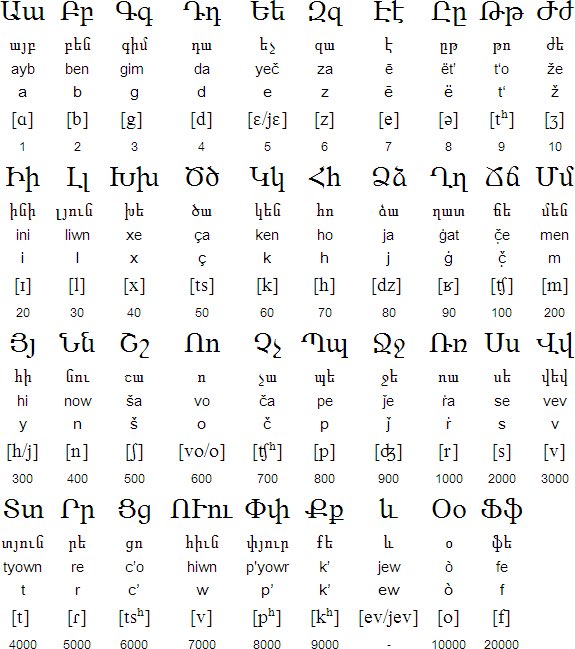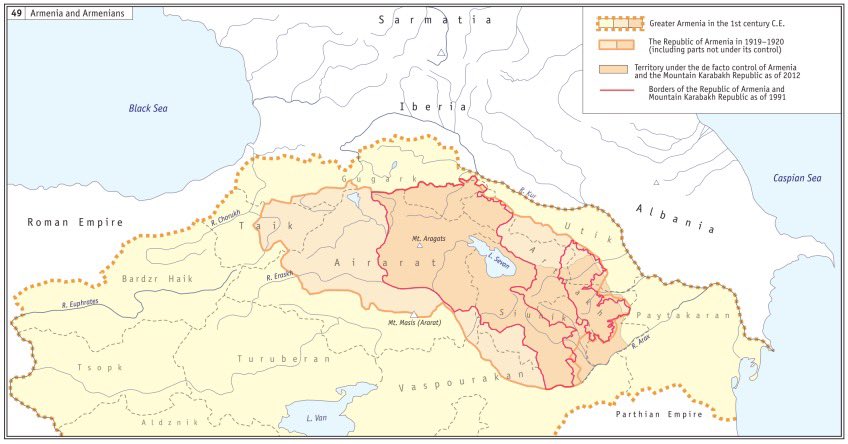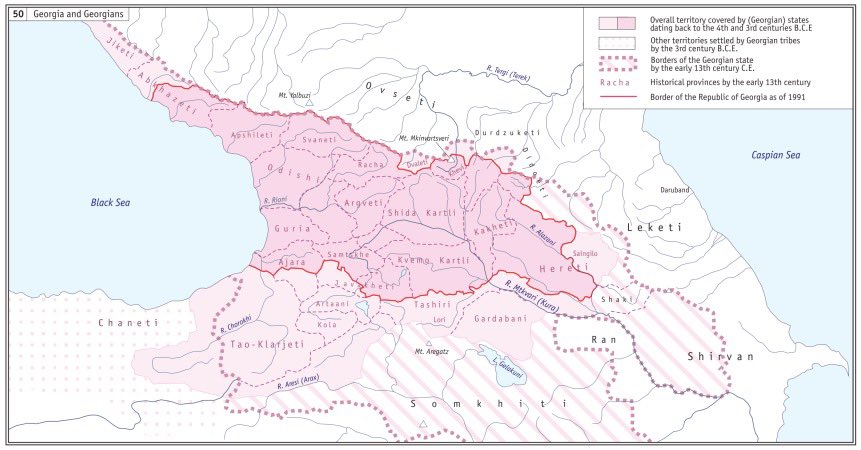The South Caucasus region of today was once home to three nations: Armenians, Caucasian Albanians, and Kartvelians (Caucasian Iberians and Colchians). I’m the early4 4th century they became among the first to become Christians and in the 5th century created their own alphabets.
Armenia adopted Christianity in 301 (or 314), Caucasian Albania in 314, and Caucasian Iberia in 326 (or 337). The Armenian alphabet was said to be created in 405, the Caucasian Albanian alphabet in 420, and the Caucasian Iberian alphabet in 430. The three nations shared a lot.
The Georgian script has evolved from Asomtavruli (5th-9th centuries), Nuskhuri (9th century) and Mkhedruli (since the 10th century, but commonly in the 19th century). You can see the evolution of the letters in these images below.
The Western Armenian standard lost some of the original sounds such as p’ k’ t’ ch’ and ts’ and this was developed among the ottoman Armenian population in the 19th century as the literary standard. On the left is the western pronunciation and the on the right is the eastern.
Colchis or Egrisi has its origins in the 17th century BC, it fell to the Hellenistic Kingdom of Pontus in 164 BC. It was reborn as Lazica in 131-697 CE. Lazica became Christian in 522, but were members of the Byzantine Church of Constantinople and followed the Greek Rite.
It morphed into the Kingdom of Abkhazia in 778. The local church had adopted the Georgian Rite and abandoned the Byzantine Church for the Iberian or Georgian Church. In 1008 east and west Georgia became unified, in 1010 the Catholicos of Iberia became the Patriarch of All Georgia
Caucasian Albania entered the historical record in the 2nd century BC and disappeared in the 8th century CE. The area became heavily Persianized and became Shirvan, a shahdom, that lasted from the 8th century to the 1538 CE. In the 16th century it became increasingly Turkified.
In the 16th century Beylerbeyliks or Beklarbeks were established by Shia Turkic tribes empowered by the Safavids of Iran. They became Khanates under the Afshars and Qajars in the 18th century. These people laid the foundation for modern-day Azerbaijanis.
Armenians base their statehood and historical territory on the basis of the Kingdom of Armenia (specifically the 1st century BC). Source is Atlas of the Ethno-Political History of the Caucasus by Arthur Tsutsiev and Nora Seligmam Favorov.
Georgians base their statehood and historical territory on the basis of the Kingdom of Georgia (specifically the 13th century CE). Source is Atlas of the Ethno-Political History of the Caucasus by Arthur Tsutsiev and Nora Seligmam Favorov.
Azerbaijanis base their statehood and historical territory on the basis of the Turko-Persian Khanates (specifically the late 18th-early 19th centuries). Source is Atlas of the Ethno-Political History of the Caucasus by Arthur Tsutsiev and Nora Seligmam Favorov.
Important note that northwestern historic Armenia (modern-day Armenia, Nakhichevan, and Artsakh) had their own Meliks (or Princes) under Turko-Persian suzerainty. They were abolished by the Russian empire. Yerevan was home to the Melik-Agahamlyan family who ruled until 1834.
Their descendants such as Isahak Melik-Aghamalyan and Hovhannes Melik-Aghamalyan served as Mayors of Yerevan in 1898-1904 and 1904-1910 respectively. This is their family house in the historic Dzoragyugh/Kond neighborhood of the city.

 Read on Twitter
Read on Twitter
















 Russia,
Russia,  Caucasian states,
Caucasian states,  Georgian states,
Georgian states,  Armenian states,
Armenian states,  Iran,
Iran,  Turkey
Turkey



